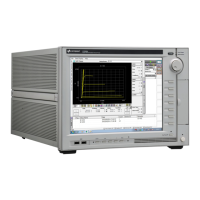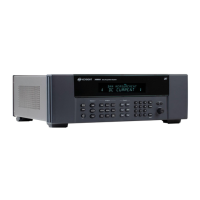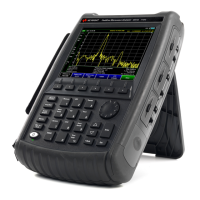1 Power Meter Remote Operation
62 Keysight N8262A Programming Guide
Using MEASure?
The simplest way to program the power meter for measurements is by using the
MEASure? query. However, this command does not offer much flexibility. When
you execute the command, the power meter selects the best settings for the
requested configuration and immediately performs the measurement. You cannot
change any settings (other than the expected power value, resolution and with the
N8262A the measurement type) before the measurement is taken. This means you
cannot fine tune the measurement, for example, you cannot change the filter
length. To make more flexible and accurate measurements use the CONFIGure
command. The measurement results are sent to the output buffer. MEASure? is a
compound command which is equivalent to an ABORT, followed by a CONFigure,
followed by a READ?.
MEASure? Examples
The following commands show a few examples of how to use the MEASure? query
to make a measurement. It is advisable to read through these examples in order as
they become increasingly more detailed. These examples configure the power
meter for a measurement (as described in each individual example), automatically
place the power meter in the “wait-for-trigger” state, internally trigger the power
meter to take one reading, and then sends the reading to the output buffer.
These examples give an overview of the MEASure? query. For further information
on the MEASure? commands refer to the section “MEASure[1]|2|3|4 Commands” on
page 171.
Example 1 - The Simplest Method
The following commands show the simplest method of making single channel
(for example A or B) measurements. Using MEAS1? results in an upper window
measurement, and MEAS2? in a lower window measurement. The channel
associated with the window can be set using the source list parameter
(see Example 2 - Specifying the Source List Parameter), or defaults as in this
example (see “Keysight N8262A” on page 65).
MEAS1?
specifies window
MEAS2?
